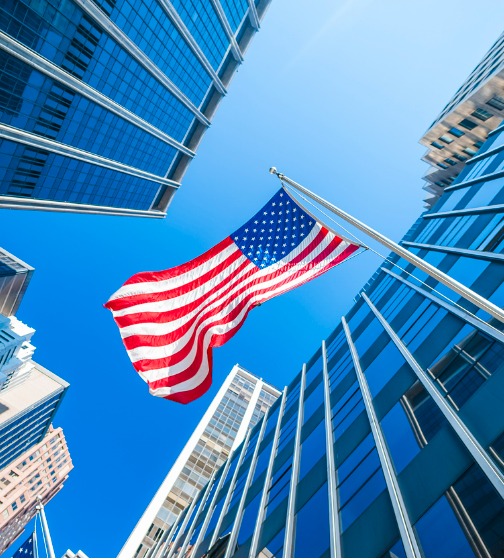Since the global financial crisis people have warned that the US has become expensive compared with other major markets and therefore risky. Look at most global equity funds and you will see they have a high exposure to North America. In our portfolios it is currently around 60%. In global indices it can be nearer 70%. Are we mad? 
The S&P 500 is currently valued at 17.3x next year’s earnings, the Euro STOXX 50 at 11.3x, the FTSE 100 at 9.9x and Japan’s TOPIX index at 14.6x. But the 10-year average for the S&P is just under 17x. It is not historically expensive, but it is relatively speaking.
It is this differential that makes some investors edgy. It has been frequently argued over the past decade or so that this valuation gap makes the US more vulnerable in times of market retreat.
In the past year we have experienced such a period, so how did that argument pan out? Year to date in local currency terms the S&P 500 and Euro STOXX 50 are both down around 12%. In sterling terms – which is what matters to British investors – the S&P is only down 1.6%. It seems that a long-held hypothesis has failed. It is a reminder that there is no substitute for looking at value not price when analysing equities.
The US is a huge economy. Workforce mobility means it is less susceptible to labour shortages than Britain (though not immune). It exports more energy than it imports. And the dollar is arguably the world’s strongest currency. As a result, they US is not importing inflation to the degree that we are here in the UK. Features like this explain America’s stock market resilience.
Of course, a few weeks ago US stocks looked better value. Since mid-June the S&P is up around 15%. Bargains have become scarce. Other markets have risen but not so much. Our most recent acquisition – Swiss hearing aid manufacturer Sonova – is one of those high-quality growth stocks we have been eyeing up for years. This year it has finally fallen to a valuation we feel is reasonable.
But this does not signal the start of a rotation from the US to cheaper stocks elsewhere, even though the Fed is leading the world in raising interest rates to tackle inflation. If central bankers overplay the monetary tightening America is surely first in line to tumble into recession.
View from the Midwest
I recently spent 10 days visiting major companies in the American Midwest, to see for myself how things are on the ground. I did not notice economic storm clouds rolling in across the plains.
Most of the cities I visited were thriving. Companies were reinvesting. Near Columbus, Ohio, Intel is placing its chips – $20bn worth – on two hi-tech semiconductor factories. These will create thousands of jobs. The Midwest is attracting workers from coastal cities that have become overpopulated and polluted.
Yes, inflation is an issue – managements discussed problems in the supply chain. But these pressures are receding. Energy prices have hopefully peaked. And wage inflation, an issue for some, is not so problematic for the kinds of companies we like – high quality companies where labour costs are relatively small. If wages are 25% of your overall costs and you raise pay by 6%, you only need to raise prices by 1.5% to cover them. These companies can do that easily – though many are looking to absorb some of the pain too so as not to over-test the patience of loyal customers. They can afford this because they tend to enjoy high profit margins.
Across both our portfolios, around half of the 60 or so stocks we hold have a 10-year average operating profit margin in excess of 20%. Six of them have a profit margin of over 50%. Companies we own that I visited include Thermo Fisher (23.4% operating margin), Mettler-Toledo (23.3%) and Proctor & Gamble (21%).
In difficult times highly profitable companies help protect your portfolio. Companies with high profit margins that are not capital-intensive may be discovered around the world. But the US has an abundance of them, especially at the top end of the S&P 500 – which explains the higher aggregate P/E multiples. Microsoft, a stalwart in many global portfolios, is a good example. It is on a 26.3x forward P/E valuation, but its 10-year average operating profit margin is 34%. It is one of the best companies in the world at turning a profit on money invested.
We are valuation-focused investors. When a company’s share price begins to look stretched we will usually start taking profits. But a stock can be relatively expensive and still fair value. Higher prices are justified by the enhanced profit margins and prospects of the best American companies. And – as is often said about FTSE 100 companies – many of these are multi-national. They offer exposure to global markets. Having a big exposure to US listed companies need not increase risk in a portfolio. In our view it is currently helping reduce it.
Alex Illingworth is co-manager of the Mid Wynd International investment trust and the Artemis Global Select fund. The views expressed above should not be taken as investment advice.





